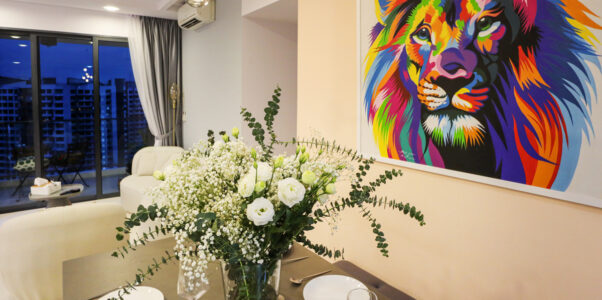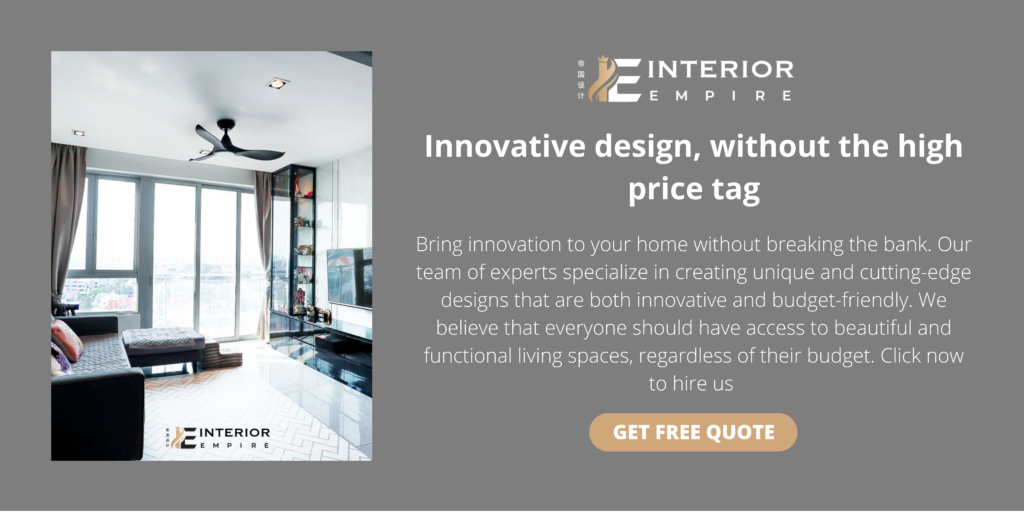When it comes to interior design, color is a crucial element that can make or break the overall ambiance and mood of a space. Colors have the power to evoke emotions, influence behaviors, and create a sense of harmony or chaos. Therefore, understanding color psychology and its impact on human psychology is essential in creating an interior design that resonates with people. In this article, we will explore the basics of color psychology in interior design, and how you can use it to create a space that feels just right.

The Basics of Color Psychology
Color psychology is the study of how colors affect human emotions and behavior. It is a branch of psychology that explores the relationship between color and the human mind. Colors can evoke specific feelings and emotions, and they can have a profound impact on our moods, thoughts, and behavior.
For instance, warm colors like red, orange, and yellow are known to create a sense of warmth, energy, and excitement. These colors are often used in spaces where people gather, such as living rooms, kitchens, and dining rooms. On the other hand, cool colors like blue, green, and purple create a sense of calmness, relaxation, and serenity. These colors are often used in spaces where people rest and relax, such as bedrooms and bathrooms.
The Impact of Color on Interior Design
Color plays a vital role in interior design, and it can affect the overall look and feel of a space. A well-designed color scheme can make a room look more spacious, cozy, or elegant. It can also create a sense of harmony or contrast, depending on how colors are combined.
The color scheme of a room can also affect people’s behavior and mood. For example, a brightly lit room with warm colors can increase energy levels and create a lively atmosphere. In contrast, a dimly lit room with cool colors can have a calming effect and promote relaxation.
Using Color Psychology in Interior Design
When designing an interior space, it is crucial to consider the psychological effects of color. Here are some tips on how to use color psychology to create the right mood and ambiance in your space:
Identify the Purpose of the Space
The purpose of the room should guide your color choices. For example, if you want to create a relaxing bedroom, you should choose cool colors like blue or green. In contrast, if you want to create an energetic workspace, you should choose warm colors like red or orange.

Choose a Dominant Color
Select a dominant color for the space and use it as a base for the color scheme. You can then use complementary colors to add depth and interest to the room. For example, if you choose blue as the dominant color, you can add accents of yellow or orange to create a vibrant and dynamic space.
Consider the Lighting
Lighting can affect how colors appear in a room. Natural light tends to make colors appear brighter and more vibrant, while artificial light can create a softer, warmer effect. Therefore, it is essential to consider the lighting when choosing colors for a space.
Create Contrast
Using contrasting colors can add depth and interest to a room. For example, you can pair cool colors like blue and green with warm colors like red or orange to create a visually striking space.
In conclusion, color psychology is a powerful tool that can help you create a space that reflects your style and personality while evoking the right mood and ambiance. By understanding the effects of different colors on human emotions and behavior, you can design a space that is not only visually appealing but also emotionally engaging.
If you’re looking to revamp your interior design and incorporate color psychology into your space, Interior Empire can help. Our team of experts specializes in creating personalized interior design solutions that cater to your unique needs and preferences. Contact us today to schedule a consultation and take the first step towards creating your dream space.



